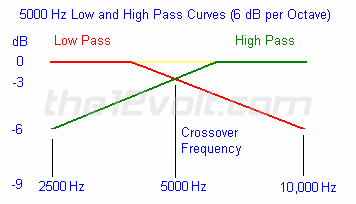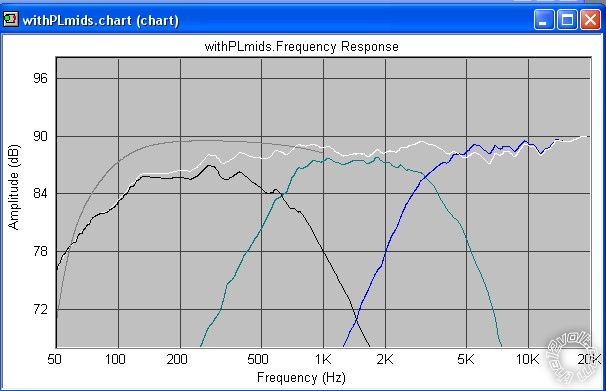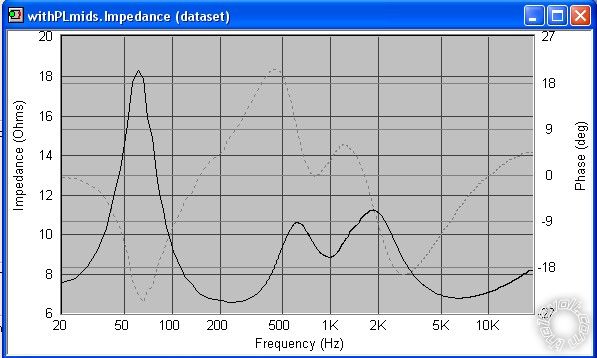if you have a 8ohm speaker and an 8 ohms tweeter does a crossover change the omhs ie into 4 or does it remain the same
-------------
trgw
If the crossover is designed properly, the impedance will be 8 ohms or above throughout the entire spectrum. At any given frequency, only one driver will be playing.
i am an idiot wrote:
If the crossover is designed properly, the impedance will be 8 ohms or above throughout the entire spectrum. At any given frequency, only one driver will be playing.
What would constitute the crossover being designed properly or not properly?
-------------
Be original yet acceptable.
Having one speaker rolling off at the same frequency that the other one begins to come in. That way only one speaker is playing any particular frequency. If at or near the crossover frequency, both drivers may be playing at a diminished level. If the mid plays from 300 to 6K and the tweeter plays 4K to 20K, your amp will see a 4 ohm load from 4K to 6K. Without an overlap, it should stay at or below 8 ohms throughout the spectrum.
A crossover point is the 3Db down point. There should not be a gap. both speakers crossed over at 1K, means that the midbass driver at 1K is 3Db below it's level at 500Hz. The next driver crossed over at 1K and up will be 3Db lower at 1K than it is at 2K. Both speakers will be playing the 1K frequency, they will both be 3Db down at that frequency. The amp will see both drivers at that frequency, but since they are both 3Db down at that point, basically the amp will only see half of each driver, thus keeping the load around 8 ohms. 4 Ohms in the case of your speakers. MrDonD
Crossover frequency I listed and the crossover frequency in this diagram are not the same frequency. Just putting the picture up for a visual.

Actually that image shows the LP and the HP at the same 5KHZ frequency...
-------------
Support the12volt.comI found the picture after I typed al the info. Did not want to go back and correct frequencies in my text. THe not the same frequency comment was directed at the 2 different crossover points. One was the text (1K) the other was the picture (5K).
hoyled, elaborate on your question or give a f'rinstance if you're not clear on this. Your question appears to be simple, as in something like: "should you use components that are 8 ohm impedance if you are combining a woofer with a tweeter through a crossover network and want to attain an 4 ohm impedance?"
That answer is no, as i am an has stated. But if your question differs from that, let us know. A crossover will change impedances in various ways but it's not something that you would anticipate in regards to choosing drivers with varying impedances. As said above, choose 8 ohm drivers if you want to have a nominal 8 ohm network.
To show how crossovers can alter impedance, here is a network of two 8 ohm woofers and a 6 ohm tweeter connected through crossovers (although ratings of the drivers are nominal. where each is actually somewhere between 6 and 8 ohms). The projected output is a fairly flat response:

But this next chart shows the varying impedances that the crossovers provoke. Notice that although these drivers are 8 ohm, the impedance of the network ranges from 6 ohm up to 18 ohms. Still, this model is considered an 8 ohm (nominal) network and is typical:

-------------
Build the box so that it performs well in the worst case scenario and, in return, it will reward you at all times.


